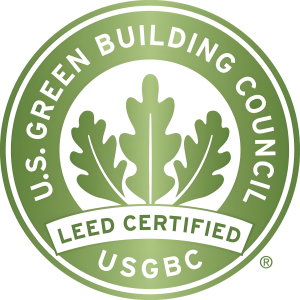Learn about the benefits of LEED for Operations and Maintenance
A pathway to better existing buildings
Existing buildings make up the majority of building stock and are a critical piece of the market. USGBC’s LEED O+M rating system provides a pathway to make these buildings better—to make them more sustainable and secure their long-term value, while positively impacting the people and communities they serve. Here are just a few of the benefits LEED O+M provides:
Performance tracking. LEED O+M certification and recertification verifies a project’s continued commitment to maintaining high levels of sustainability performance. Through tools such as the Arc performance platform, LEED O+M empowers owners to track resource use for better efficiency, reducing a building’s carbon footprint and operating costs. Recertification through Arc enables owners to protect and grow their sustainability investment over time, by ensuring that their initial certification is just the starting point for ongoing environmental mitigation.
Health and well-being. LEED O+M provides a pathway for improving the well-being of site users through health-related credits across all categories, including credits focused on improving indoor air quality. LEED O+M policies, practices and tracking mechanisms support implementing achievable strategies to address existing health needs and minimize project features that could present risks to occupant health.
Environmental stewardship and ESG goals. Building owners and tenants are increasingly recognizing and embracing their role as stewards of their communities and our future. More and more of the world has begun to see the imminent threat posed by climate change, and sustainability reporting has become a material concern for investors and shareholders. As a third-party verification and certification system, LEED provides a powerful means for organizations to measure their positive impact and demonstrate their leadership and commitment on environmental issues, supporting long-term ESG strategies and allowing companies to gain credence through various reporting schemes such as GRESB, the Global Reporting Initiative, the Principles for Responsible Investment, CDP and the Dow Jones Sustainability Index.
LEED O+M buildings provide a winning scenario for all stakeholders involved. For property owners, LEED-certified assets stand out among peer market properties while reaping benefits such as increased occupancy, higher rental rates and reduced operating costs. For occupants, certified projects provide employee productivity gains, recruitment enhancements, improved indoor air quality, reduced natural resource use and help meeting corporate social responsibility goals.
Be among the leaders
Currently, there are more than 2.7 billion square feet in the U.S. that have either certified or recertified using the LEED O+M rating system. Globally, more than 21,000 projects in 135 countries are using the Arc platform to track their building data, covering 5.54 billion square feet, and impacting 10.4 million occupants. As the demand for better performing, healthier, more environmentally responsible buildings grows, so do these numbers.
https://www.usgbc.org/articles/learn-about-benefits-leed-operations-and-maintenance



